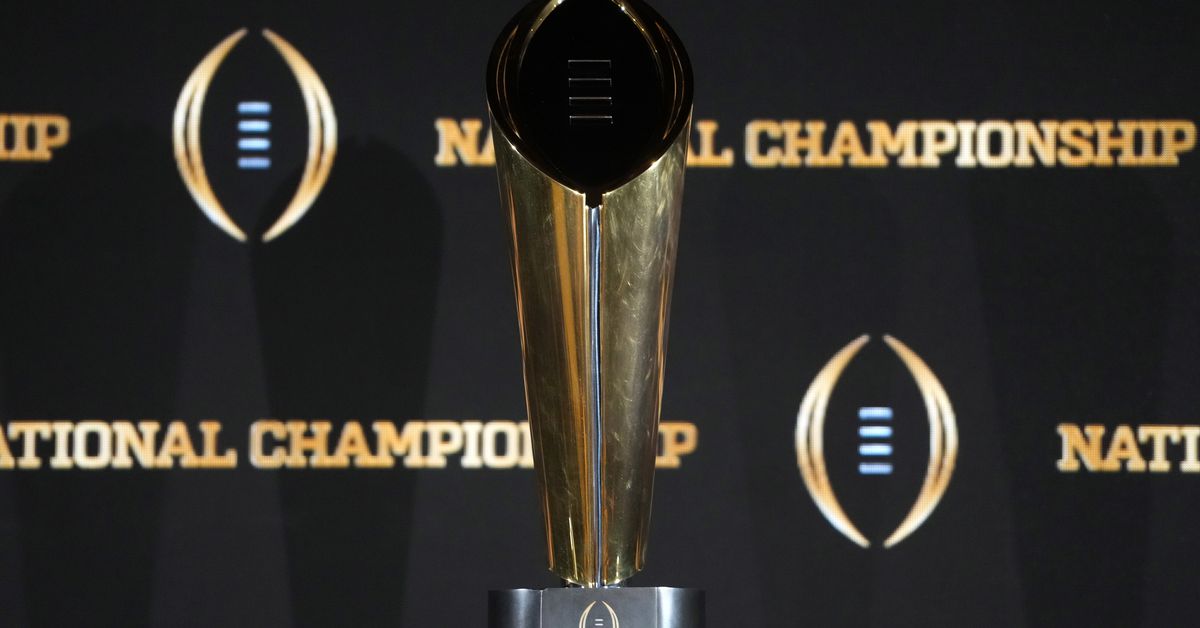
To the average fan, the current College Football Playoff is confusing. Still to this day, I’m not totally sure a casual fan knows the ins and outs of how each team lands where, thanks to the four awarded byes and rules surrounding the non power four auto-bid.
It was Boise State jumping up and grabbing a bye over ACC Champion Clemson last year, thanks to the Broncos being the highest G5 team and landing higher than Clemson in the final College Football Playoff rankings. Arizona State also jumped up the seed list with their Big 12 Championship run, going from the No. 11 to the No. 4 seed.
Arizona State and Boise State making that jump kept teams like Penn State and Texas out of the top four, creating two blowouts in the opening round of the CFP. From a Tennessee standpoint, it cost the Volunteers a host date at Neyland Stadium (vs. SMU) and instead put them on the road against the suddenly red hot Ohio State Buckeyes.
What if we just made this really simple and seeded things straight from the final College Football rankings? That’s what ACC commissioner Jim Phillips wants to see happen.
“I will say this. One of the other things we’ll have to look at is just seeding,” Phillips told reporters at the ACC spring meetings this week. “It just seems that the straight seed may be the right thing for us to consider.”
Straight seeding would make everything easier to follow and would likely create better matchups across the board. Is it really fair that Penn State lost the Big Ten title game and drew SMU and Boise on their way to the final four? Meanwhile the Big Ten champion Oregon Ducks got Ohio State in the second round?
Anyone with eyes could have told you that neither Boise State or Arizona State was a top four team in the country, too. Why reward all P4 conference titles with byes when the four are clearly not equal? The same goes for the non-P4 bid. Things change year to year, sure, but with how loaded the Big Ten and SEC are now, the odds are pretty good that this funky seeding system would produce similar results every year going forward.
If the goal is to create the most fair way to determine a champion, straight seeding is clearly the way to go. Here’s how the first round would have looked last season.
No. 12 Clemson at No. 5 Notre Dame
No. 11 Arizona State at No. 6 Ohio State
No. 10 SMU at No. 7 Tennessee
No. 9 Boise State at No. 8 Indiana
Assuming no upsets, here’s the second round.
No. 8 Indiana vs. No. 1 Oregon
No. 7 Tennessee vs. No. 2 Georgia
No. 6 Ohio State vs. No. 3 Texas
No. 5 Penn State vs. No. 4 Notre Dame
This way the conference title winners still get their shot. The group of five still gets its best team in with a shot. But you’re going to have to go prove it against the best at-large teams left in the rankings. Simple.
As we’ve seen throughout the history of the CFP, blowouts are going to happen. There was just no stopping Ohio State this winter after that embarrassing loss to Michigan, as Ryan Day decided to light a fire under the Buckeyes and coach like his life depended on it. Still though, the straight-seeded bracket just makes more sense and is much more fair. Rewarding a team out of the Mountain West and a team out of the Big 12 (in a major down year — its first without traditional powers Texas and Oklahoma) with byes just doesn’t sit right with me.
This thing is a moving target, at least for now. Hopefully it won’t always be this way, but you’re going to see changes here. That much is inevitable. We’re going to see a 16-team bracket before too much longer as schools and TV Networks continue to cash in on expanded schedule. More games = more money, it’s that easy.
For now though, the 12-team structure is what we have. Hopefully we can drop the auto-bye system and simply reward the best teams.
This post was originally published on this site be sure to check out more of their content.










